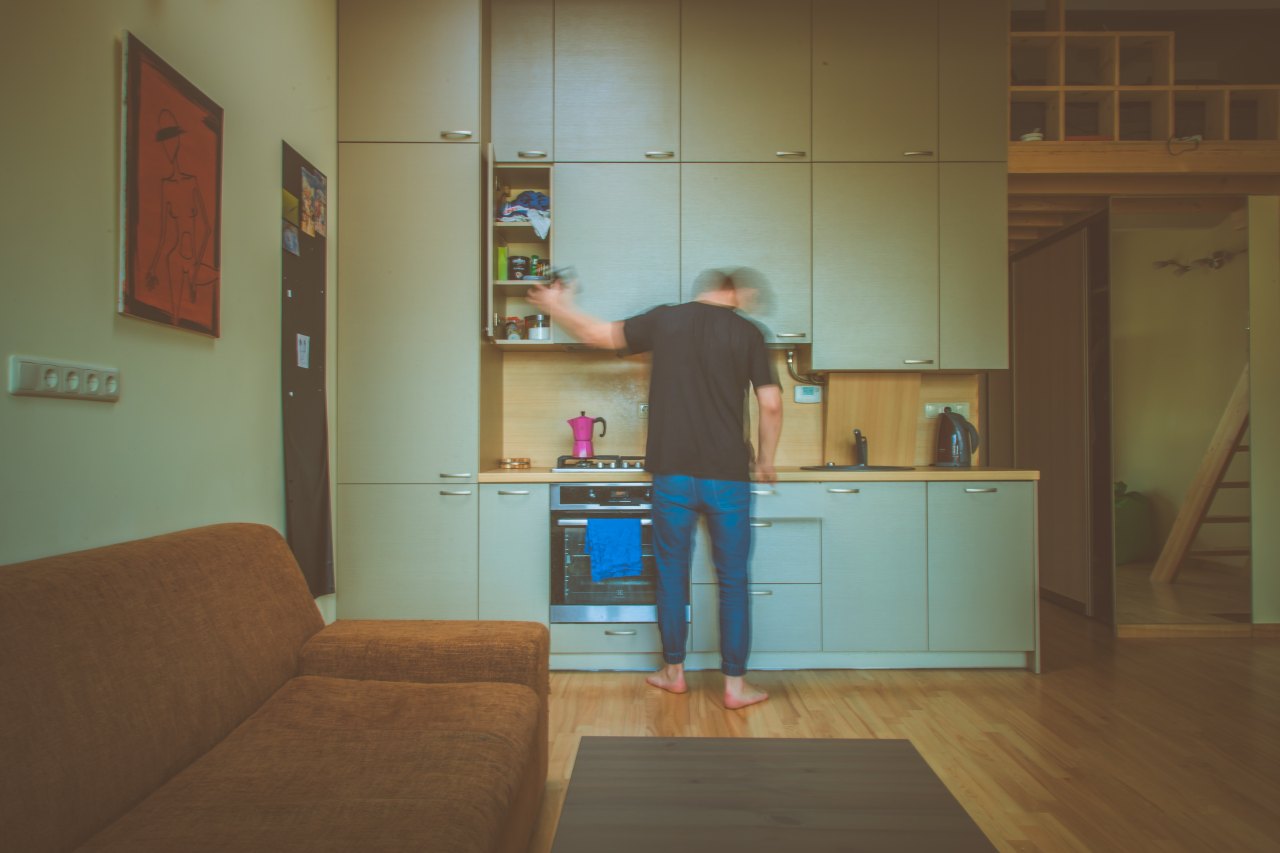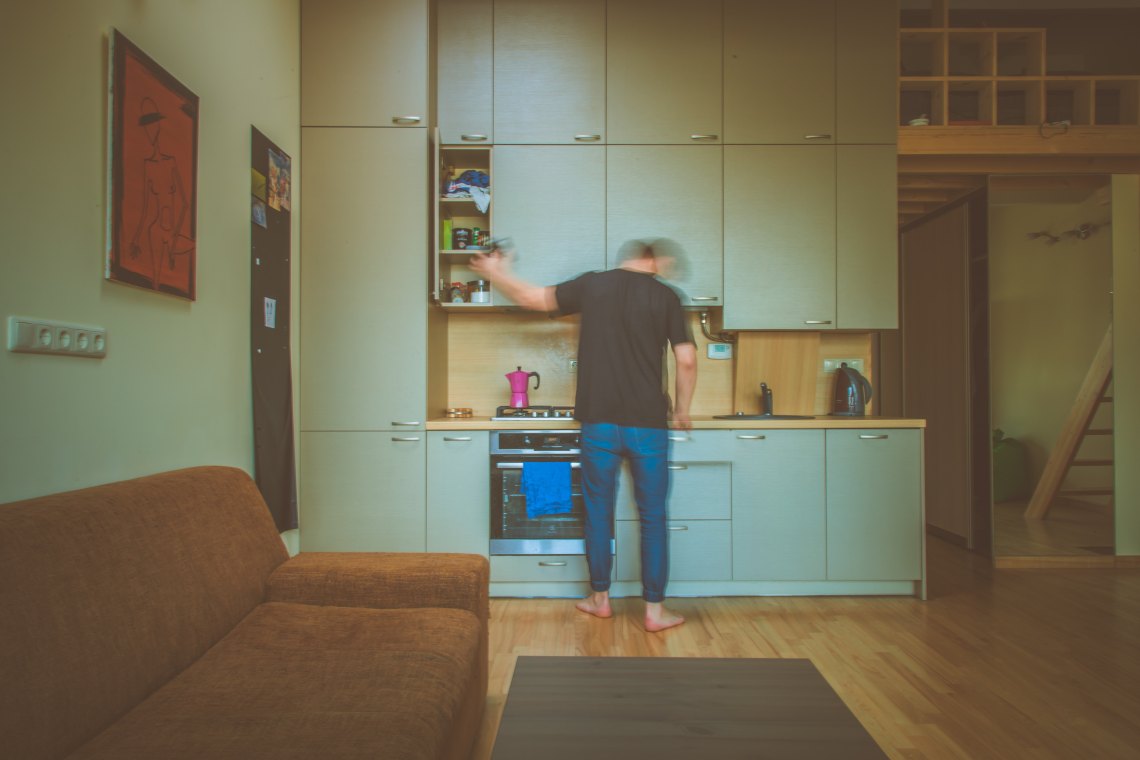
How I Discovered (And Also Tamed) My Anxiety
I was only 33. I was young, fit, and strong. But I felt like I was having a heart attack.

I was only 33. I was young, fit, and strong. But I felt like I was having a heart attack.
Almost as quickly as it had come in, the storm passed, just as I was getting ready to go to the emergency room.
It wasn’t a heart attack. I later learned that it was an anxiety attack (sometimes called a panic attack).
Apparently, the signs are similar, and many people end up in the emergency room due to anxiety attacks.
Who knew?
When Depression and Anxiety Overlap
I didn’t know, but I should have.
This was not my first experience with anxiety. It was my strongest episode, and it certainly got my attention, but it wasn’t my first rodeo.
“I guess I might have an anxiety disorder too,” I said to myself after I learned that it was an anxiety attack.
I had already been diagnosed with major depression years earlier, which is why I used the word “too.”
Along with my diagnosis of depression, I remember being told that anxiety and depression often go together, and that I might have an anxiety disorder on top of the depressive disorder.
But the word anxiety wasn’t in my diagnosis, so I didn’t pay attention to that part.
(Actually, I’m also guilty of ignoring the depression part. Or rather hiding it — from myself as well as others.
Understanding Anxiety
It’s amazing how long humans can ignore their problems. I ignored my anxiety until I couldn’t, until I had an anxiety attack so severe it knocked me on my ass.
I was lucky. My first anxiety attack didn’t send me to the hospital.
The symptoms are so close to a heart attack that many people just go to the ER. And rightly so. You don’t want to mess around with chest pain and palpitations.
Going to the hospital during an anxiety attack sounds to me like just about the worst thing ever. The 10th circle of hell.
The emergency room causes anxiety for a normal person. Now imagine going through all those tests while having the worst anxiety of your life.
Seriously, people who endure that are badasses. They have my respect.
What Anxiety Feels Like
What’s it like to have an anxiety attack, even without the hospital?
For me, it’s a storm that rolls in suddenly, bringing palpitations, sweating, and chest pain. I sometimes hyperventilate as well.
But the worst part is that I lose my ability to think clearly. It’s like I can no longer trust my brain. Something isn’t working right in there.
This is my own experience with anxiety. Other people have different experiences. Common symptoms include: fatigue, sweating, restlessness, shortness of breath, a feeling of impending doom, insomnia, nausea, poor concentration, sensation of an abnormal heartbeat, or trembling.
The Anxiety Epidemic
Anxiety is the most common mental illness in the U.S., and anxiety disorders affect over 18% of the population ages 18 and older (source).
Holy Epidemic, Batman! That’s over 40 million people!
Half of those people also suffer from some form of depression.
I’m one of the millions of Americans who suffer from both depression and anxiety.
Although anxiety isn’t a top killer like depression, it’s still a serious problem, and not just for people with anxiety.
Get this. Anxiety disorders cost the U.S. over $40 billion every year (source).
Unfortunately, the epidemic is getting worse, not better.
The Roots of Anxiety
When it comes to understanding the roots of anxiety, I believe I’m in a unique position.
Okay, maybe not unique. I’m not the only person on the planet with this combination of qualifications. But I’m still a rare bird, dammit.
I’m qualified because:
- I have years of personal experience battling anxiety.
- I’ve been helping people battle anxiety for years.
- I have years of training in Traditional Chinese Medicine.
- I have decades of experience with both sitting and standing meditation (more on that later).
My experience with anxiety, meditation, and qi has led me to make the following conclusion about anxiety:
Anxiety is caused by a Monkey Mind that has run amok. When the Monkey Mind runs amok, the qi (or vital energy) also runs amok. And when the qi runs amok, the human nervous system also runs amok.
For those who aren’t familiar with the term, the Monkey Mind is an ancient Zen term for describing the constant stream of internal dialogue in the human mind. The purpose of Zen, and indeed all forms of meditation, is to quiet the monkey mind.
In my tradition, the process of quieting the Monkey Mind is called Entering Zen, and it is the first phase of my 5-Phase Method.
Digging Up The Roots of Anxiety
If my statement about the roots of anxiety is true, then digging up the roots of the anxiety weeds should be simple, right?
To calm the nervous system, we need to calm the qi. And to calm the qi, we need to quiet the monkey mind.
Technically, it is simple. But simple ain’t always easy.
The solution to anxiety is meditation. Meditation gets to the roots of the problem — i.e. the Monkey Mind. In short, meditation gives you the ability to tame that annoying monkey in your head.
And when that happens, the qi flows smoothly, and your nervous system is not agitated.
But what is meditation?
In 21st century America, the word meditation means this:
Unfortunately, this definition is problematic for those of us with severe anxiety.
Moving Away from Sitting Meditation
Meditation is the solution — but not just the sitting kind.
Sitting meditation, done correctly and consistently, is a wonderful solution to anxiety. Perhaps even the ultimate solution. There’s even a growing body of science to back this up.
I recommend Dan Harris’ excellent book 10% Happier for a skeptic’s guide to sitting meditation. Harris is a news anchor who had an anxiety attack on live TV. He’s done some great work in spreading the information and interest about sitting meditation.
However, what Harris misses is that his own positive experience with sitting meditation is atypical for people with severe anxiety.
Asking someone with severe anxiety to start with sitting meditation is like asking a new violinist to start with the Brahms concerto.
(For those who don’t know, the Brahms violin concerto is really really really hard to play.)
This is a sink or swim approach. Some will swim, like Harris. But many will sink.
Many of you reading this know exactly what I’m talking about. You’ve tried sitting meditation, and you failed. It was torture.
No, not just torture. It was impossible.
Meditation Without All That Sitting Around
So what’s the solution for us?
Meditation is still the solution — but not the sitting kind.
For those of us with severe anxiety, the combination of flowing movement and gentle breathing gives us an anchor. It gives the Monkey Mind a banana to chew on.
It’s absolutely critical that the movement not induce anxiety. Unfortunately, the way qigong and tai chi are often taught is anxiety-inducing rather than anxiety relieving.
This is because people in the qigong and tai chi world constantly obsess about the form.
The external form is the least important aspect of internal arts like qigong and tai chi, so why obsess?
I give my students permission to butcher the external form of qigong and tai chi. More than permission. Sometimes, when a particular student is trying too hard, and I can see that she is obsessing about the form, I insist that she do it badly.
“That was an A-. Now show me a C+.”
The truth is you don’t even need movement. Watch my free class on anxiety to see how you can reduce anxiety with meditative techniques that have no visible movement.
But gentle, flowing movement is beautiful, and it is liberating for many people with anxiety.
Even a tiny amount of movement, combined with breathing, can make a huge difference. Watch this free class to discover a super-simple qigong exercise that you can do in less than 1 minute.
Taming That Anxiety
I still experience anxiety, but I am grateful to have tools to manage it.
And these tools work amazingly well.
It’s almost like popping a pill for me. If I feel my anxiety rising, I pop a qigong or tai chi pill. And it works every time.
I’m planning to do a 10-day sitting meditation retreat. In this retreat, I’ll be asked to sit for 8-10 hours per day. And there’s no talking either.
There is no way I could conceive of doing this kind of retreat if not for qigong and tai chi. I would not make it through day 1. Heck, I wouldn’t make it through hour 1.
My point is that you work your way up to (down to?) sitting meditation rather than starting with it.
It took me 20 years to fall in love with sitting meditation. But during that time, I had a beautiful affair with qigong and tai chi. ![]()











